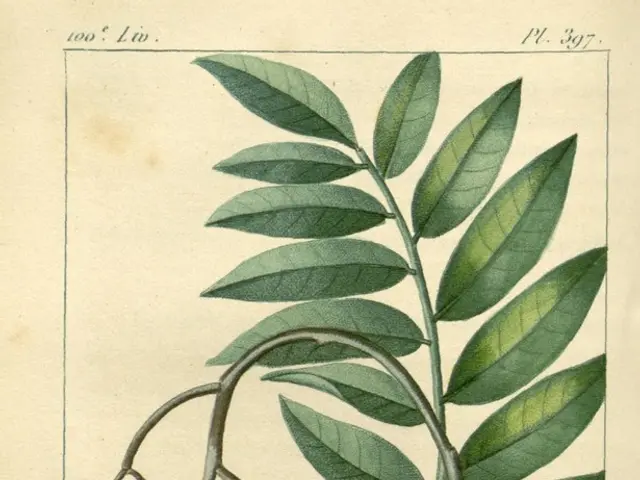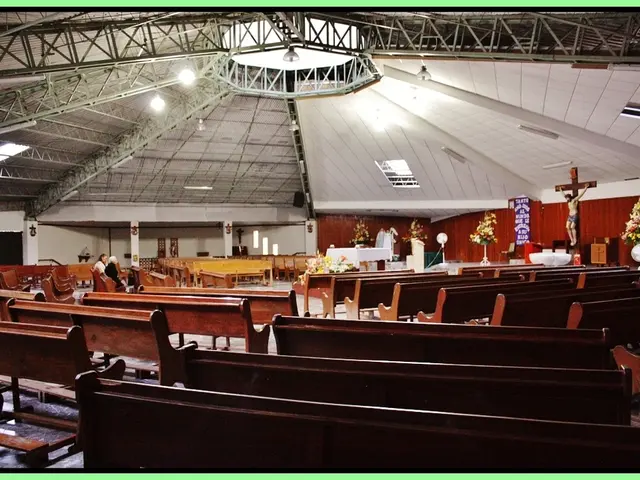Questionable Watering Practices Every Indoor Horticulturist Ought to Reconsider
Keepin' your houseplants healthy ain't just about rememberin' to water 'em. In fact, common waterin' habits can do more harm than good, and even the smallest mistakes can lead to some serious plant problems. Here's what you should be aware of, and how to avoid 'em:
1. Stickin' to Schedules Can Leave 'Em Soaked
Waterin' on a strict schedule can be harmful because indoor plants don't always need water at the same time each week. Factors like temperature, humidity, and sunlight affect how fast soil dries out. If you water too often without checkin' the soil, your plant's roots can rot. Instead, feel the soil an inch down—if it's dry, it's time to water, if it's still damp, wait a day or two.
2. Letting 'Em Sit in Standing Water
Standing water in saucers or decorative pots without drainage can suffocate or rot plant roots. Most houseplants don't like swimmin' in water, and standing moisture creates the perfect breeding ground for fungus and pests. Always empty the saucer shortly after waterin', or use a pot with proper drainage inside your decorative container.
3. Using Cold or Mineral-Heavy Water
Cold water can shock plant roots, especially for tropical plants that prefer warmth. Hard tap water may also have minerals like calcium or chlorine that build up in the soil and damage roots over time. To help avoid mineral buildup, use room-temp water that's been left out overnight, or filtered water.
4. Ignorin' Drainage Needs
Without drainage holes, water collects at the bottom of the pot and can lead to root rot. Even if the topsoil seems dry, water can pool below the surface. Always choose pots with drainage holes, and use saucers to catch extra water. This helps your plant breathe properly and stay healthy.
5. Waterin' During Dormancy
Many indoor plants go through a resting phase in fall or winter. During this time, they need less water because they grow more slowly. The extra moisture may cause root damage or mold if you continue waterin' as usual. Instead, check the soil carefully and reduce how often you water during these cooler months.
6. Mistin' in Low Airflow Spaces
Mistin' can increase humidity for some houseplants, but it can also encourage mold or fungal growth, especially in rooms with little airflow. Leaves that stay wet for too long are more likely to get leaf spot or powdery mildew. If your plant needs humidity, try using a pebble tray or humidifier instead of mistin'.
7. Usin' Dirty Water Tools
Dirty waterin' cans and tools can spread harmful bacteria, mold, or insect eggs from one plant to another. Over time, buildup inside containers can also affect water quality. Clean your waterin' equipment regularly to keep your plants safe and healthy.
8. Overusin' Self-Waterin' Pots
Self-waterin' pots can be helpful, but they should not replace regular plant care. Always monitor the soil, and adjust the amount of water you add based on each plant's needs.
9. Waterin' 'Em All the Same
Different plants need different amounts of water. A fern will dry out quickly, while a succulent can go weeks without a drink. Waterin' all your plants the same way can lead to some wiltin' from thirst while others rot. Learn what each plant prefers, and water based on its specific type and growing conditions.
10. Treatin' Succulents Like Tropicals
Succulents and cacti store water in their leaves and stems, so they need far less moisture than tropical plants. Overwaterin' them can cause their roots to rot quickly. Allow their soil to dry out completely between waterin' sessions, and use a gritty, well-drainin' soil mix.
11. Misreadin' Yellow Leaves
Yellow leaves can be a warning sign, but not always for lack of water. Overwaterin' can also turn leaves yellow by suffocating the roots. Before reachin' for the waterin' can, check the soil. If it's wet, the plant may be gettin' too much water.
12. Usin' Drinks Instead of Clean Water
Waterin' with leftover drinks like soda, coffee, or juice can harm plants. These liquids contain sugars and acids that attract pests and encourage mold growth. Only use plain water to keep your plants healthy.
13. Waterin' with Ice Cubes
Ice cubes can be risky for tropical plants that prefer warm soil. The cold temperature can damage roots and slow growth. Use room-temp water instead, and pour it slowly into the soil so that it soaks in evenly.
14. Ignorin' Compacted Soil
Over time, potting soil becomes compacted, makin' it hard for water to reach the roots. This can cause water to pool on the surface or run down the sides of the pot. Loosen the soil gently with a fork or replace the soil with fresh mix to improve water flow and root health.
15. Usin' Stale Bottled Water
Water that's been sitin' in plastic bottles for too long may contain bacteria or absorb chemicals from the plastic. It can also go bad, which ain't good for your plants. Only use clean water that's been stored in a glass or food-safe container, and don't let it sit for more than a few days.
16. Waterin' in Nursery Liners
Nursery pots often sit inside decorative covers that trap water at the bottom. If you water without removin' the inner pot, extra moisture can build up and lead to rot. Always remove the decorative cover before waterin', and make sure the soil is fully drained before puttin' it back.
17. Forgetin' to Check Humidity
Low humidity can make plants dry out faster, while high humidity slows down evaporation. Ignorin' the humidity in your home can lead to overwaterin' or underwaterin'. Use a humidity meter to keep track of levels, and adjust your waterin' routine accordingly.
18. Followin' Outdated Advice
Not all plant care advice works for every situation. Outdated or vague advice could make you water your plants too often or too little. Always double-check information with trusted sources, and pay attention to how your plants are reactin' to your current care routine.
19. Waterin' Crown Directly
Pourin' water directly onto the crown of a plant can lead to rot. These sensitive areas should stay dry to prevent damage. Instead, water the soil gently around the base.
20. Waterin' Without Rotatin' Plants
If you always water from the same side, one part of the root system may receive more water than the other, leadin' to uneven growth and weak spots. Rotate your plants every two weeks to ensure equal distribution of light and moisture on all sides.
By avoidin' these waterin' mistakes, you can create a safer and more nurturin' environment for your plants. Whether you're a beginner or a seasoned plant parent, payin' closer attention to your waterin' habits makes all the difference. Keep learnin', stay observant, and let your plants guide you—they know what they need.
- A well-maintained indoor plant collection can significantly enhance a home-and-garden lifestyle, but it's essential to approach watering with care to avoid causing damage.
- To create a thriving indoor jungle, one must select appropriate indoor plants that complement various aspects of their lifestyle, ones that can not only adapt to indoor conditions but thrive in them.






